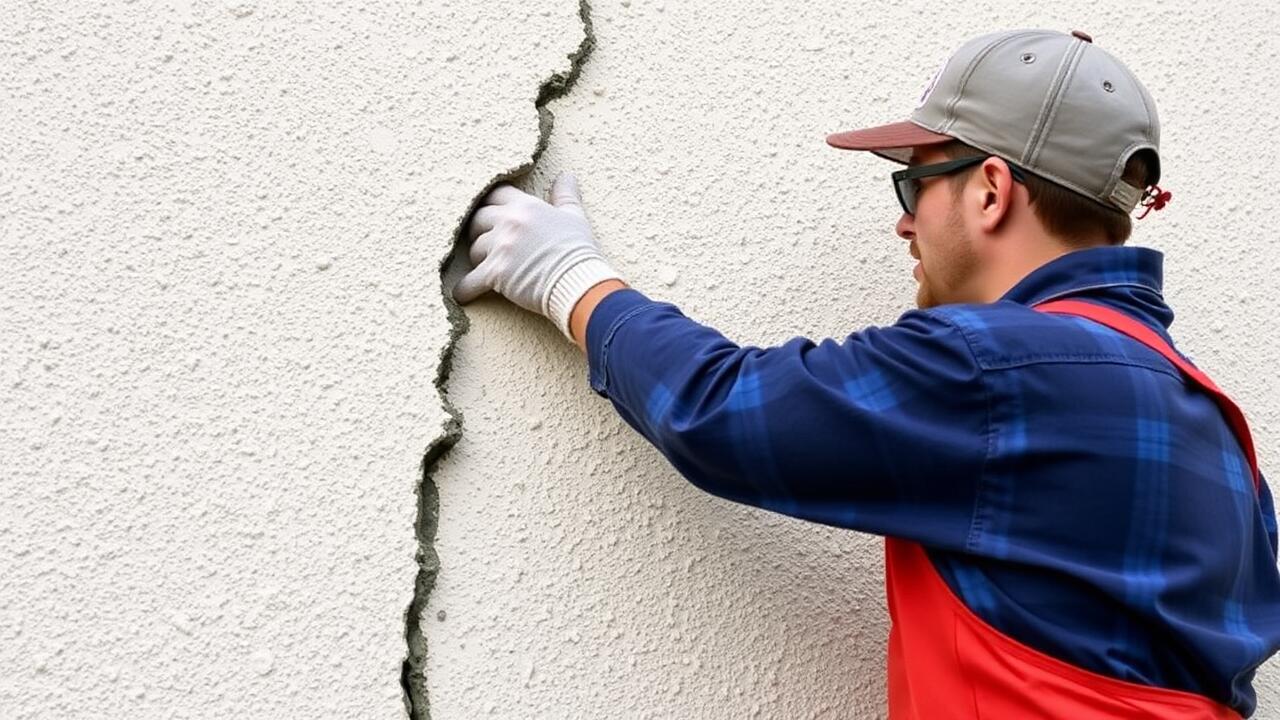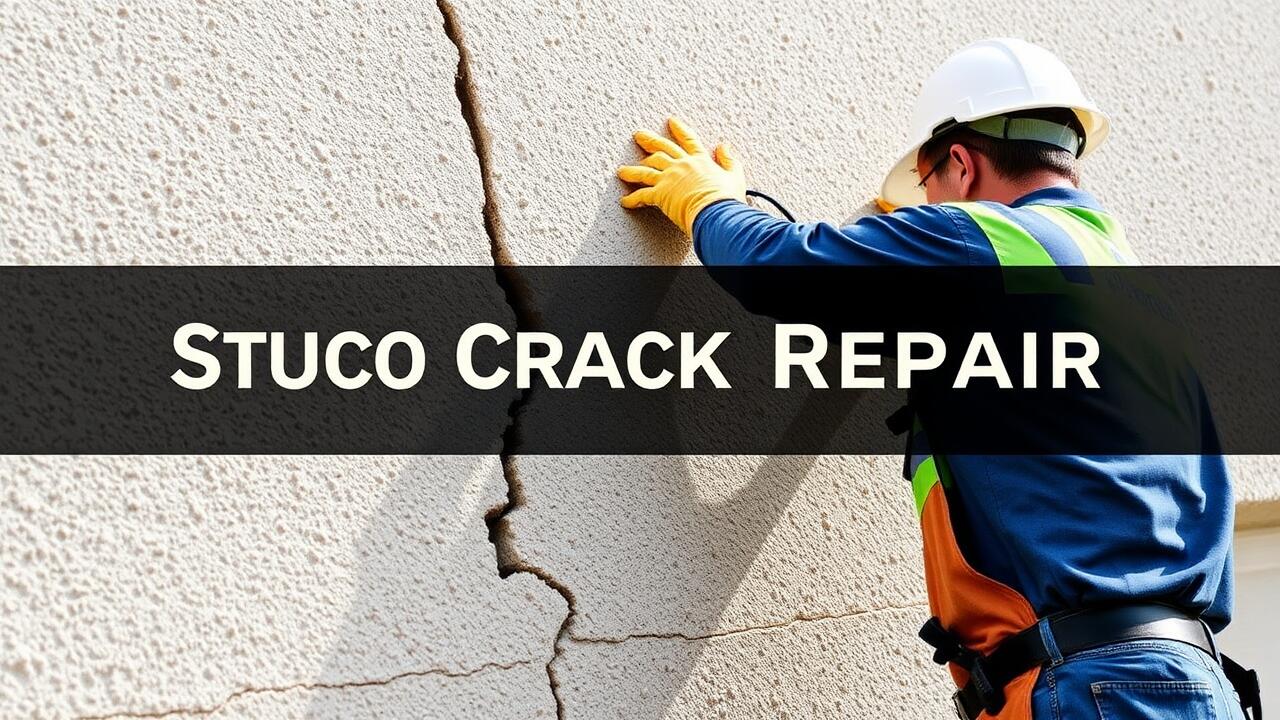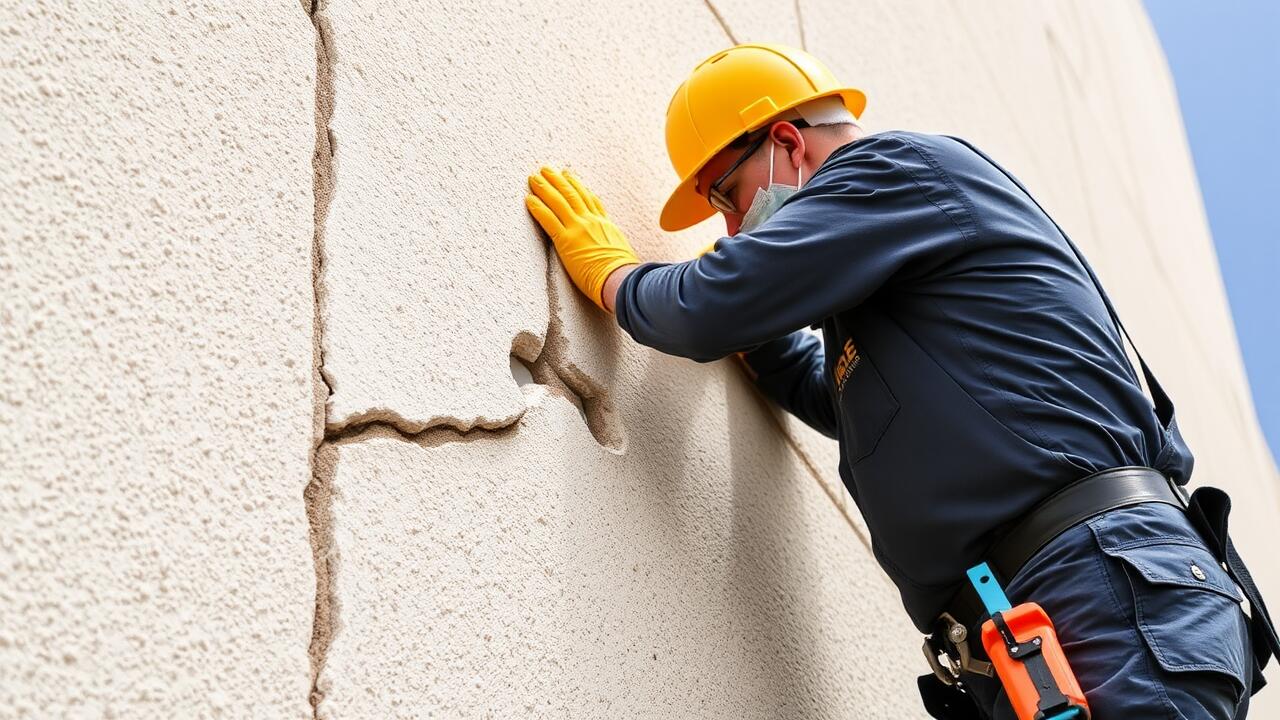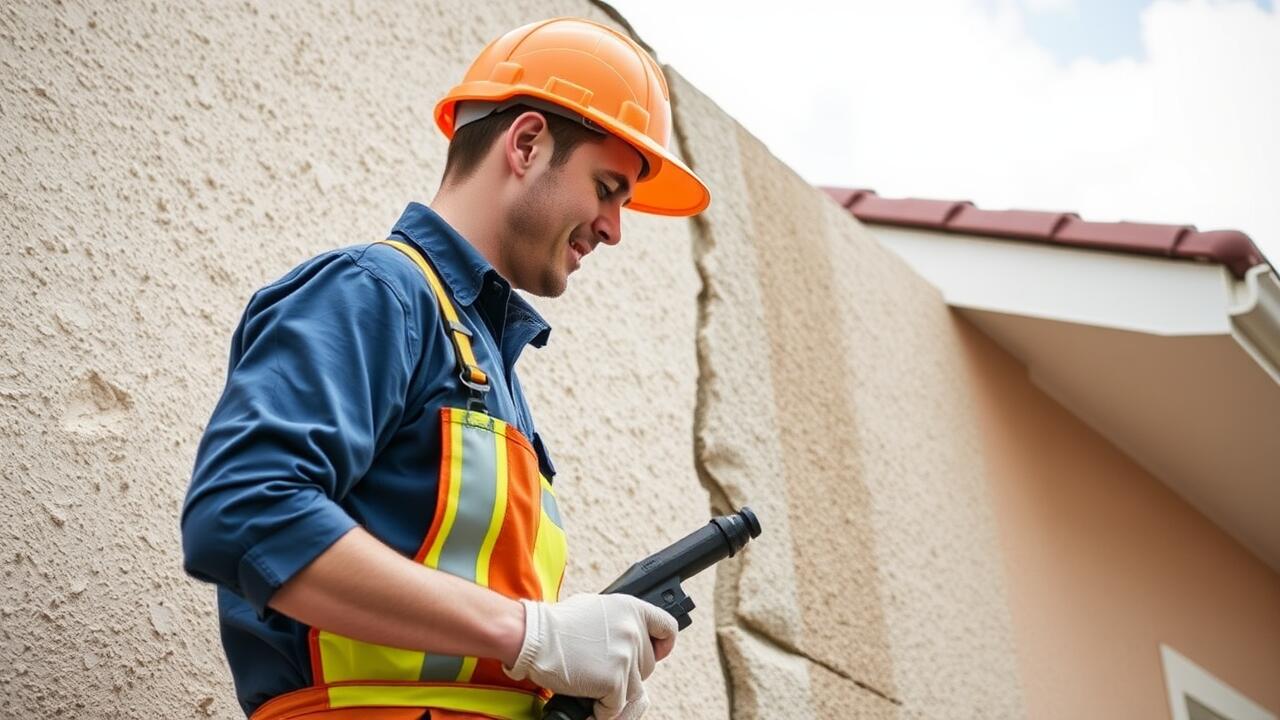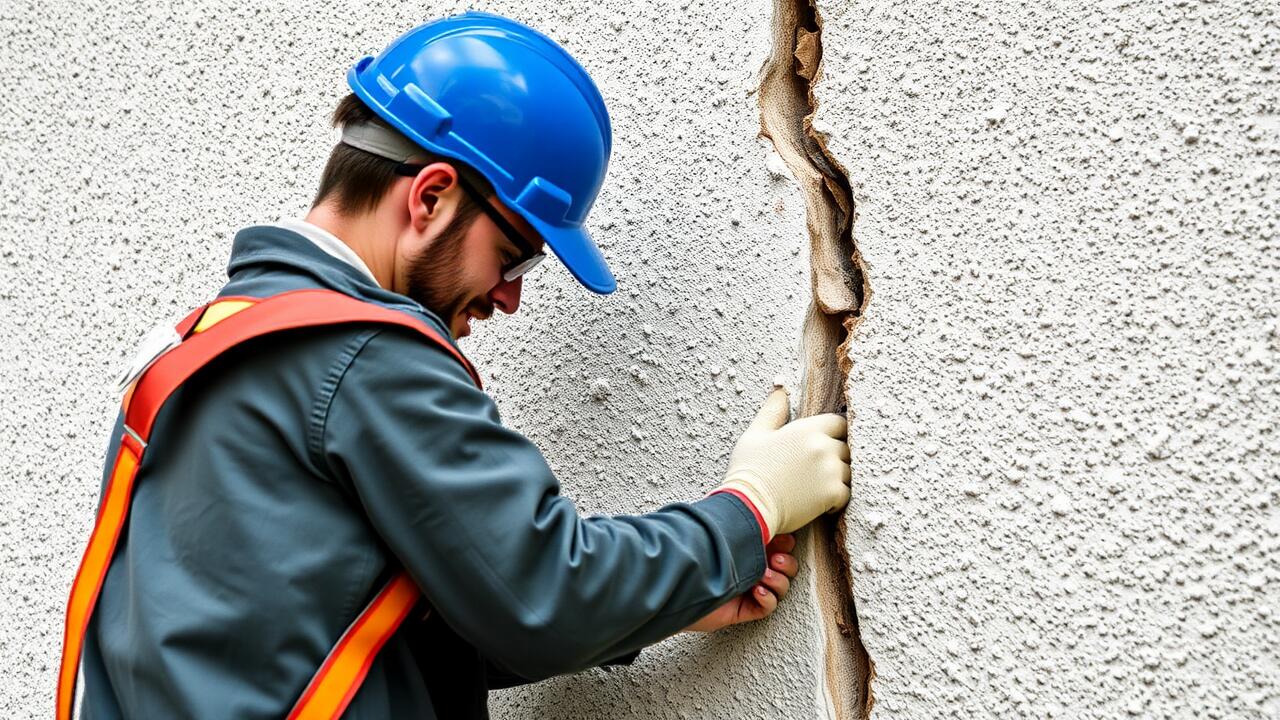
Filling the Crack
To begin the process of filling a stucco crack, it is essential to clean the area thoroughly. Remove any loose debris, dust, or old paint from the crack using a wire brush or a vacuum. This step ensures that the repair material adheres properly to the surface. In areas where the crack is deep, it may be necessary to widen the crack slightly to allow better penetration of the filler. Once cleaned, choose a suitable repair compound designed specifically for stucco and prepare it according to the manufacturer’s instructions.
When applying the filler, use a putty knife or a trowel to push the compound into the crack firmly, ensuring full coverage. It is crucial to overfill slightly, as the compound may shrink as it dries. For those in need of expert assistance, "Stucco Crack Repair in Canoga Park, Los Angeles" offers professional services that can manage this task efficiently. Make sure to feather the edges of the repair to blend it seamlessly with the surrounding stucco.
Step-by-Step Application Process
Before starting the stucco crack repair process, ensure you have the necessary materials ready. Gather a utility knife, a wire brush, a caulk gun, and a suitable caulk specifically designed for stucco. Begin by using the utility knife to clean out the crack, removing any loose particles or debris. This step is crucial for a strong bond between the caulk and the stucco. Next, take the wire brush to further clean the walls around the crack, ensuring the surface is free of dust and dirt.
Once the area is prepped, insert the caulk tube into the caulk gun. Apply a steady bead of caulk into the crack, making sure to fill it completely. Use your fingers or a putty knife to smooth the caulk down, pressing firmly to eliminate any air pockets. After applying the caulk, allow it to cure according to the manufacturer's instructions. For residents considering professional help, local services offer expertise in Stucco Crack Repair in Canoga Park, Los Angeles, ensuring durability and quality results.
Smoothing the Surface
Achieving a smooth surface after filling a crack is crucial for a professional finish. Start by using a trowel or putty knife to gently scrape away any excess patching material around the crack. Be careful not to disturb the surrounding stucco. Once you’ve removed the excess, use a damp sponge to lightly smooth out the filled area. This helps to blend the patch with the surrounding stucco and removes any rough edges. For best results, work in small sections and ensure that the surface is even before moving on.
After you have smoothed the surface, take a moment to assess the repair. Sometimes, additional texture may be needed to match the existing stucco. A common technique involves employing a brush or a textured sponge to stipple the surface, mimicking the original stucco finish. This step is important for Stucco Crack Repair in Canoga Park, Los Angeles, where matching textures can significantly impact the overall appearance of the exterior. By carefully replicating the texture, you ensure that the repair is less noticeable and integrated seamlessly into the surrounding area.
Techniques for a Seamless Finish
Achieving a seamless finish after filling cracks in stucco requires attention to texture and color. Use a trowel or putty knife to spread the repair compound evenly over the patched area. Repeat this process until the surface is level with the surrounding stucco. Pay close attention to the existing texture of your stucco when applying the compound. Try mimicking the original finish by using flicking or stippling motions with a brush or sponge.
Once the compound is dry, the next step is to blend the color of the repair with the rest of the wall. This can involve mixing pigments into your finishing coat or using a spray texture if applicable. In areas where color differences remain noticeable, consider applying a thin layer of paint that matches the stucco color. Homeowners seeking professional quality results in stucco crack repair often find services like Stucco Crack Repair in Westchester, Los Angeles, especially beneficial for achieving a flawless appearance.
Painting and Sealing
Selecting the right exterior paint is essential for the longevity of your stucco. It is important to choose a paint specifically designed for stucco surfaces as these products are formulated to adhere well and provide a durable finish. Color options can vary widely, so consider the overall aesthetics of your home and how the color complements the surroundings. Always ensure that the paint is suitable for the local climate to withstand weather variations.
After applying paint, sealing the stucco will enhance its protection against moisture and UV damage. Look for a quality sealant that offers breathability to prevent moisture buildup while keeping the surface water-resistant. Application should be done evenly to ensure comprehensive coverage. For those undertaking stucco crack repair in Canoga Park, Los Angeles, utilizing the right paint and sealant can significantly extend the life of the repair and enhance the overall appearance of your home.
Choosing Appropriate Exterior Paint
Selecting the right paint for your stucco surface is crucial to ensure durability and protect against the elements. When considering exterior paint, look for a product specifically designed for stucco applications. These paints typically feature a breathable formulation, allowing moisture to escape while providing a protective layer. Opting for elastomeric paint can also offer flexibility, which is beneficial for areas that may experience slight movement or expansion over time.
Color choice can significantly impact your home’s curb appeal. Light colors may reflect UV rays, helping to keep the surface cooler, while darker shades can add depth and character. Consider the overall aesthetic of your home and the neighborhood in Canoga Park, Los Angeles, when making your selection. It's wise to test a small area before committing to a paint color, ensuring it complements the existing architecture and landscape. This attention to detail will enhance the effectiveness of your stucco crack repair efforts.
FAQS
What are the common causes of cracks in stucco?
Common causes of cracks in stucco include settling of the foundation, temperature fluctuations, moisture issues, and improper application during initial installation.
Can I fix a crack in stucco myself, or should I hire a professional?
You can fix small cracks in stucco yourself using the right materials and techniques. However, for larger cracks or extensive damage, it may be best to hire a professional.
What materials do I need to repair a crack in stucco?
To repair a crack in stucco, you will typically need a chisel, a wire brush, stucco patching compound, a trowel, and exterior paint for finishing.
How long does it take for stucco repair to cure?
The curing time for stucco repair can vary, but it generally takes about 24 to 48 hours for the patching compound to dry. However, full curing may take a week or more depending on weather conditions.
Is it necessary to paint over repaired stucco?
While it is not strictly necessary, painting over repaired stucco is recommended to protect it from the elements, enhance its appearance, and ensure a seamless finish with the surrounding area.
